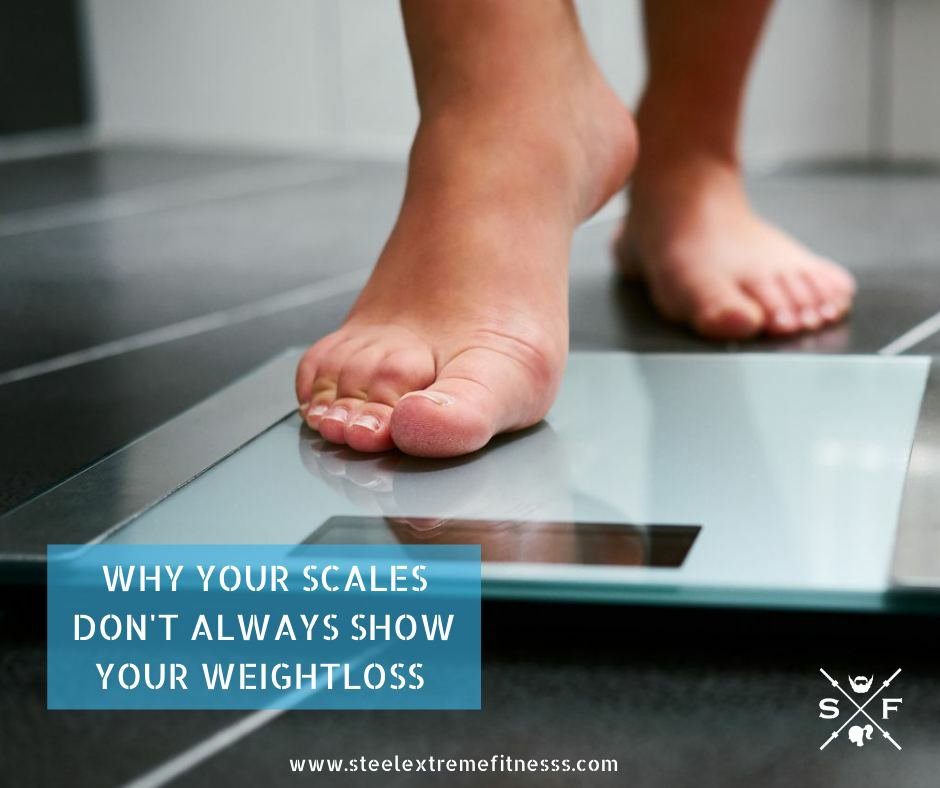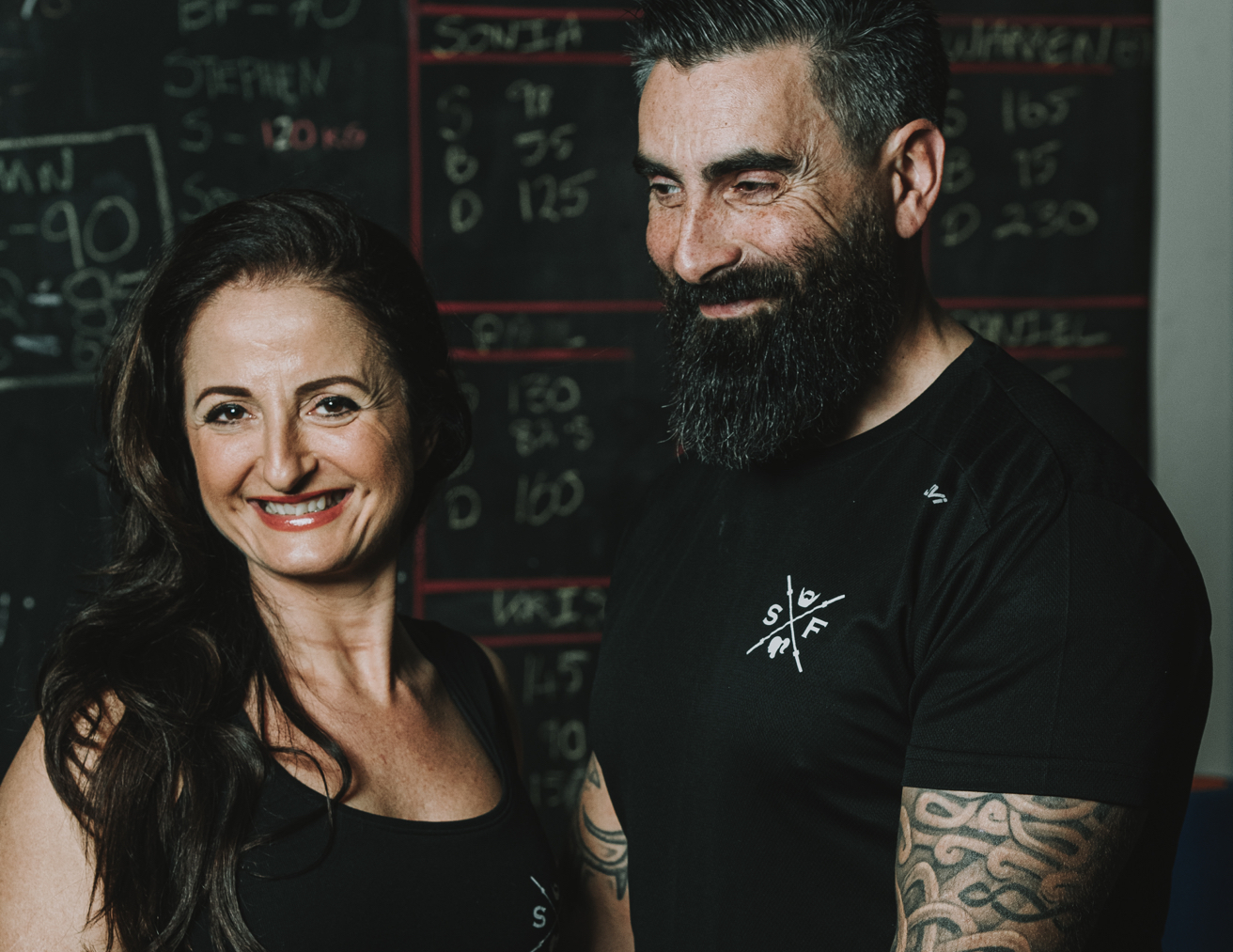Blog Why your scales don’t always show your weight loss
How many times do you weigh yourself? Do you get disheartened when the numbers don’t move? Relying on the scale to tell you if you’re at a healthy body weight can be frustrating. Understanding what the scale does and does not tell you will help you keep the scale’s information in perspective.
The Difference Between Fat and Muscle
A scale simply measures your total body weight in kilograms (or pounds). It does not measure how many of those kilograms are muscle, bones, blood, etc. and how many are fat. Exercise physiologists call this ratio your body composition, typically referred to as percent body fat.
Focusing on the number on the scale is problematic because you don’t know how many Kg’s are from fat and how many are from muscle. You may have heard that “muscle weighs more than fat.” That’s not true. A kg of muscle weighs the same as a kg of fat: one kg. However, fat and muscle differ in an important way, muscle is much denser than fat. Think of it this way: Muscle is like a brick. Fat, on the other hand, is like cotton balls. It takes far more cotton balls than brick to make a kg. A kg of fat takes up more space on your body than a kg of muscle.
Making Changes
Let’s examine how judging yourself solely by scale weight can be misleading. Let’s say you are sedentary and decide to start a fitness program that includes moderate to vigorous aerobic exercise for 20 to 30 minutes three to four days per week, and strength training two to three days per week. If you combine this workout schedule with a sensible calorie deficit, research suggests you could potentially lose 500g to 1kg of body fat per week.
Your new fitness lifestyle could help you lose, say, 5 kg of fat in the next three months. In addition, your strength training program could help you gain about 1.5kg of lean muscle weight, a very positive change. If you used the scale as your only reference point, you might be tempted to think your new lifestyle wasn’t working very well, because you’d see only a 3.5kg weight loss. But rest assured that you would have made truly positive changes.
Because of fat’s low density, you’d probably see the 5kg loss as smaller circumference measurements around your stomach, hips and thighs. That’s why paying attention to the way your clothes fit is generally considered a better way to assess your progress than focusing on the scale.
If you went just by the scale’s number, you might be tempted to skip strength training, and that would be a shame. Additional muscle tissue not only helps you become stronger, making daily activities easier to accomplish; it also has an extra long-term advantage: Muscle tissue expends calories all day long, even when you are at rest. Over the course of a year, a few added kilos of muscle can help you burn thousands of additional calories
Getting Real About Weight
Keep in mind that your body weight can fluctuate by up to 2kg over the course of a day. This is especially true if you exercise fairly vigorously. The fluctuation is due to changes in the amount of water in your body. If you weigh yourself before and after an exercise session, you might find you’ve lost a kg or so. It’s just water loss. If only results were that instant!
Likewise, if you weigh yourself right after a big meal, the scale might show you’ve gained weight. Additionally, women often show weight fluctuations in relation to hormonal changes during their monthly menstrual cycles. Checking the scales no more than once every week or two is usually best.
How much should you weigh? Health and fitness professionals frequently debate this question, but there’s no clear-cut answer. If you have no risk factors, such as high blood pressure, high cholesterol or Type II diabetes, and adopt an active lifestyle that incorporates regular exercise and sensible eating, the weight you achieve over time will likely be your healthy weight. Patience and persistence are key.

Accurately measuring changes in percent body fat is an excellent way to track changes in your body composition. To find out your percent body fat, contact us to carry out a bodyfat reading.
Speaking of measurements, this is one of the reasons we ask all our clients to take their circumference measurements on a weekly basis. This is an excellent way of tracking changes in the body composition. Losing cms around your midsection and hips for example is a prime example of muscle gain vs weight loss, and how it doesn’t always read accurately on the scales.
Free Consultation for Nutrition. Click here now for further information.
So remember – the scales are not the be-all and end-all. There are far more accurate ways to measure your progress, and we are huge advocates of muscle building whilst losing body fat. The long-term benefits of having some extra muscle mass will not only aid your weight loss, but will also increase your strength making it easier to complete your exercise routines and burn those calories!
If you want to get a good accurate idea of where you are sitting right now, or are interested in finding out your body fat percentage, Steelextreme has all the tricks in the book. Drop us a message now and let us get you on the right track.
Create delicious, wholesome, & calories controlled meals


Offering the best personal trainer and nutrition advice in Malta, Steel Extreme Fitness offers you private gym membership – where you will feel right at home.
© 2020 Steel Extreme Fitness. All Rights Reserved